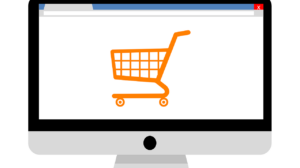According to Wikipedia, the definition of E-commerce can be defined as any transaction conducted over the internet. The term is actually an abbreviation for “electronic commerce”. Today we will be discussing the different types of E-commerce businesses that are flourishing today, and how you can build a recession-proof online business in today’s market!
The concept of online buying and selling is nothing new, but few actually know how robust the industry has become. A prime example of how popular E-commerce has become is the company Ebay.
For those who don’t know, Ebay is one of the most well-known sites for individuals to buy and sell most anything they want. (Ebay is so popular that in 2019 it was estimated that over $22 Billion worth of goods were transferred just that year alone!)
But this kind of E-commerce is just the tip of the iceberg!
The Types of E-Commerce Everyone’s Using (And Why Some of Them Might Not Be Worth It)
A famous quote by the late technological business legend Steve Jobs gives insight into how why certain ideas and businesses are better than others:
“If you really look closely, most overnight successes took a long time.” – Steve Jobs
A study was conducted which revealed that 42% of all businesses fail simply because there is no market demand! (29% fail because of a lack of funds and another 23% fail because of bad team chemistry)
This means that most businesses fail due to a lack of market research! They didn’t even know if their products were in-demand! That shows a lack of research and planning.
Any recent article discussing business over the last 20 years will mention the digital revolution that has taken place with the internet. If a business isn’t online, it isn’t really competing. (And keeping your E-commerce business relevant is more important than ever!)
1. B2B (Business to Business)
This kind of E-commerce is highly profitable and represents a majority of all transactions done online. When a business buys something from another business, there can be physical products involved, but just as much business is completely virtual between companies.
You might already see the weakness of this kind of E-commerce, however, since any kind of physical products had an incredibly difficult time being transported and delivered in 2020 during the pandemic. (We are still experiencing this toll on supply chains)
So if a business was only exporting physical stock, the moment that item isn’t in demand (like forklifts or something) and or couldn’t be delivered, suddenly the business is going broke.
(Another reason many companies were unable to stay afloat in 2020 even if they did have a demand for their goods was because of freight restrictions. Many E-commerce companies rely on freight to fulfill orders, so when borders were closed, suddenly common items were hard to acquire.)
2. B2C (Business to Consumer)
This next one comes as no surprise, Amazon is easily the biggest and most popular E-commerce site in the world used by consumers right now. The online shopping giant claims they made $125.6 billion in the fourth quarter of 2020 alone.
It was reported that nearly 50% of the US population accessed Amazon via their mobile app in September of 2020.
How did Amazon perform so well in what many consider a terrible year economically?
Here’s why:
- 89% of consumers say they trust Amazon and would buy from them.
- Over 150 million people get free shipping with their Amazon Prime subscriptions. There is a financial incentive to buy on Amazon because of how much money they save on shipping each year.
- 82% say that the affordable prices on Amazon are the primary factor for them when shopping on the site.
- And the ease of access continues to attract mobile and desktop users alike!
How does Amazon pull it off? They don’t sell one thing, they sell practically everything the average consumer wants and needs!
The problem with this business model is that it isn’t reflecting smaller businesses or more niche-specific brands.
It also doesn’t talk about how many people didn’t buy as much or anything online because they had lost their jobs!
It is important to ask oneself whether the product you’re selling is viable in a good market or a bad one. This is what’s called a “recession-proof” business model.
3. Business Financing
Do you know what the sexiest product in the world is? Money.
Money is popular and in-demand.
A 19-year-old waitress, out of a job and quarantined at home in 2020, was stuck at home with no source of income. She turned to a site called OnlyFans, a platform which is notorious for its users selling nudes to paying subscribers.
That’s right, this gal had bills to pay and needed money. (And so do a lot of people. As unemployment is reaching record highs, OnlyFans reports that over 170,000 people are joining the platform every single day!)
Do you want to know who didn’t have to transfer their business online, or join OnlyFans to make a living? Business loan brokers.
That’s right, specialists who connected businesses with the funding that they needed to stay afloat.
This would technically be called “Business to Business”, except there is a middleman connecting each party together for a cut.
79% of small businesses have an outstanding debt, and it isn’t always to stay afloat either. Enterprises are always in need of capital for a myriad of reasons. The point is that money is always at the center of it.
No matter how bad things get, or how good they get, money is always going to be in demand, just like a business loan broker. (And there are no shipping costs!)
Conclusion
B2B and B2C are becoming synonymous with commerce as a whole, with retail business becoming highly speculative. (There are certainly exceptions, but it is an established fact that more people are doing business online)
By essentially selling money as the middleman, you position yourself as a broker who profits no matter how bad things get. (Because when things get hard, businesses take out loans, and they will contact brokers to help)
That’s a real “recession-proof” business model!





